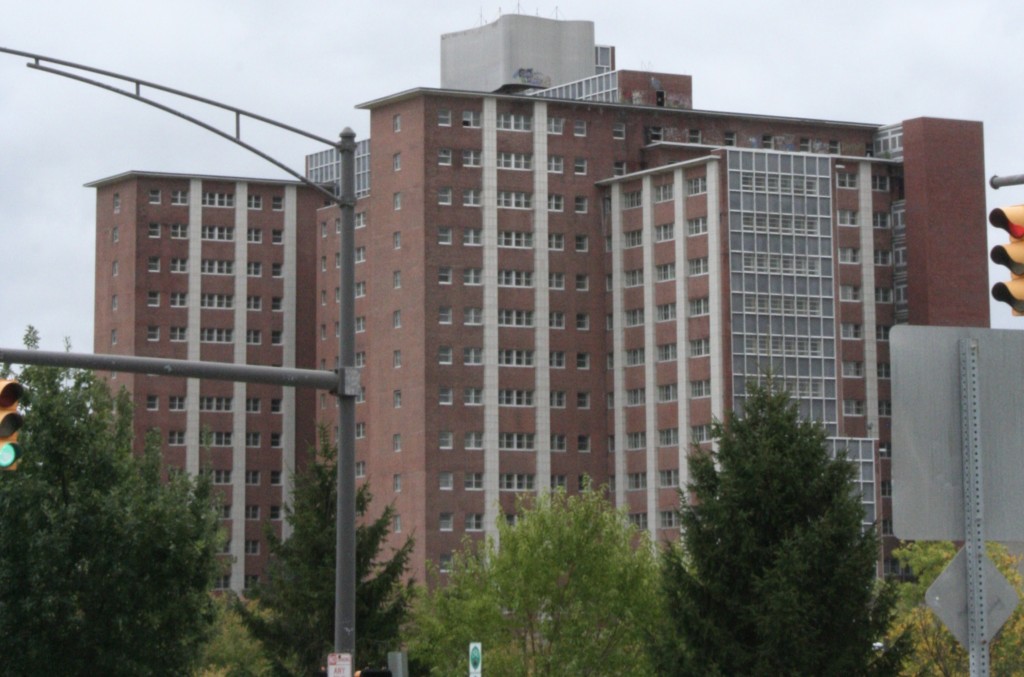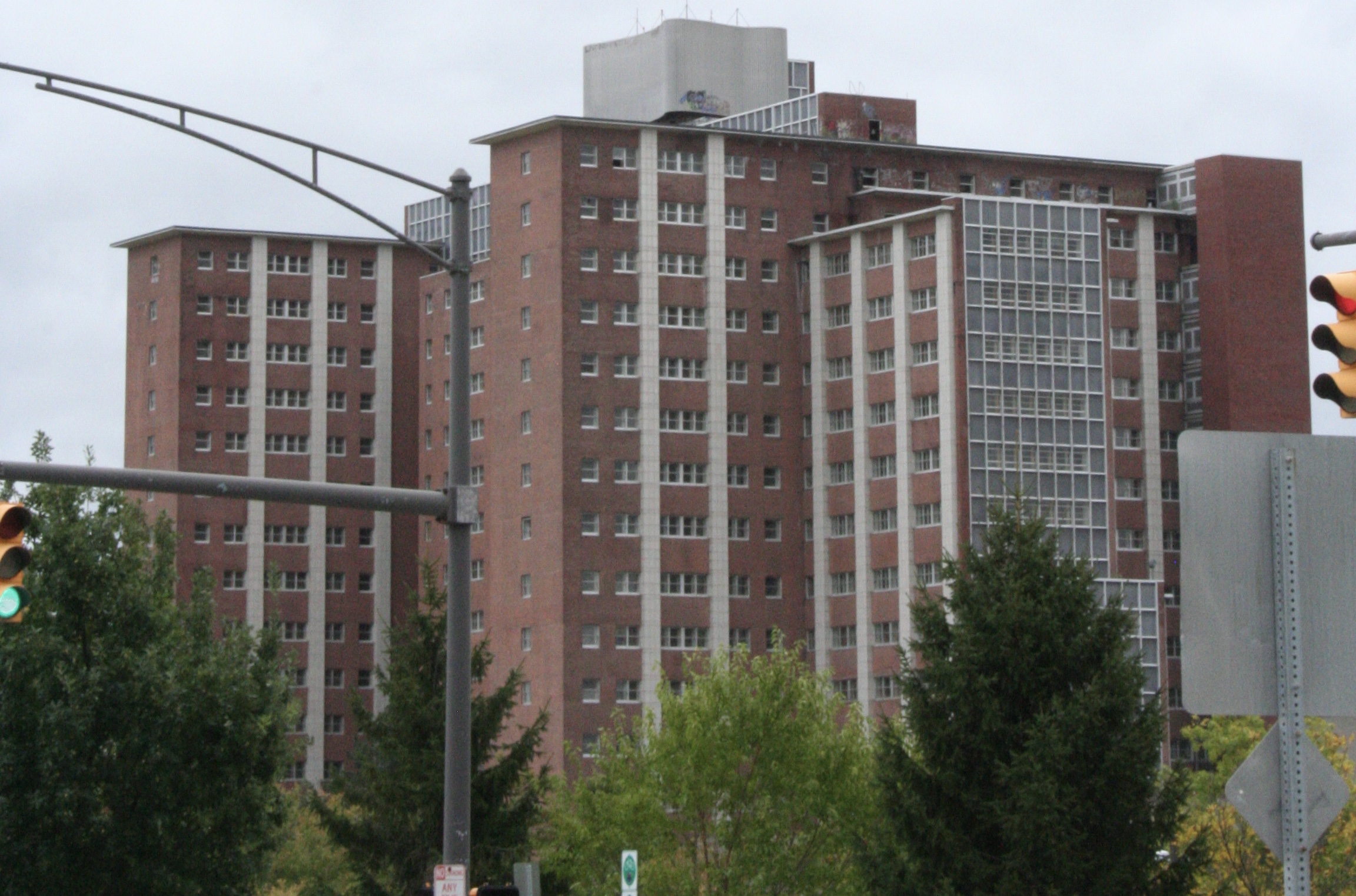Terrence Tower, once considered a state-of-the-art institution for the care of the mentally ill, has fallen into decay since its doors were permanently shut in 1995.
Like a sore thumb, the tower looms over the surrounding buildings — to one side, a modern psychiatric center, plus some cheery suburban houses directly across the street.
Very few people have legally entered the building in the past 25 years.
But the asylum has attracted quite a few intruders intent on taking pictures or just breathing in the asbestos-filled air. One photographer narrated his visit to Terrence Tower: “From [the lobby], looking back up at the building, it felt like I was going straight into the belly of the beast. In the bottom of a spaceship. 17 floors of unknown medical and surgical science loomed above me in the hazy pre-dawn mist. It was just me and this spectacular structure, alone at last.”
Some accounts of Terrence Tower detail horrible physical abuses, while others speak to its emotional toll. One blog claims that asylum security “practically tortur[ed] some patients” and “[went] as far as raping others.” There is no credible record of such; the only readily-available sources including accounts from former patients speak only to the effects of their subpar, neglectful treatment.
Terrence Tower was always meant to keep people on one side of its walls; it’s just that before, it was meant to keep people in. Between 1959 and 1995, hundreds of mentally-ill patients were locked up in Terrence Tower, to be treated as lost causes, impossible to reintegrate with society.
The divide that the asylum created between patients and the outside world became apparent when families attempted to visit their incarcerated loved ones. In “Echo Of The Past: The Terrence Tower,” a 2012 documentary, former patient Daniel Syles recalls that “[t]here was no area for the general population to be with families.” Others recalled neglect from the doctors themselves. When Dr. Laurence B. Guttmacher, a former doctor at the asylum, pulled up Syles’ old chart, he found that it was very “scholarly,” with “almost nothing in there about what he wanted.”
Based on what the most reliable evidence gives us, the greatest horror of Terrence Tower was that patients were dehumanized, trapped in a building that they couldn’t leave, with staff that didn’t care to accommodate their most basic emotional needs. There was no plan in place to rehabilitate them and prepare them to return to the outside world. Terrence Tower was just meant to reassure its doctors and the families of patients that they were doing the right thing, and that they knew what was best.
In “Echo of the Past,” architect Francis Pitts says, “It’s the thoughtlessness, it’s the unintentional things that we do in a hospital that actually can hurt the most.” The neglect and dehumanization caused by Terrence Tower is what makes this story so important. It already contributes to a narrative of mental health care defined by a lack of regard for patients’ well-being. Why should we feel the need to add pain to a story that has already changed so many people’s lives? For that matter, why should we feel the need to break into a building that so many have wished to escape, in the hopes that it will tell us a story that’s already been told?
Despite what it once housed, Terrence Tower doesn’t look monstrous. If you fixed the broken windows and took care of the asbestos problem, it might look like a good place to give tours, or a nice site for a hotel.
Let’s not, though. We’re better off outside, anyway.



